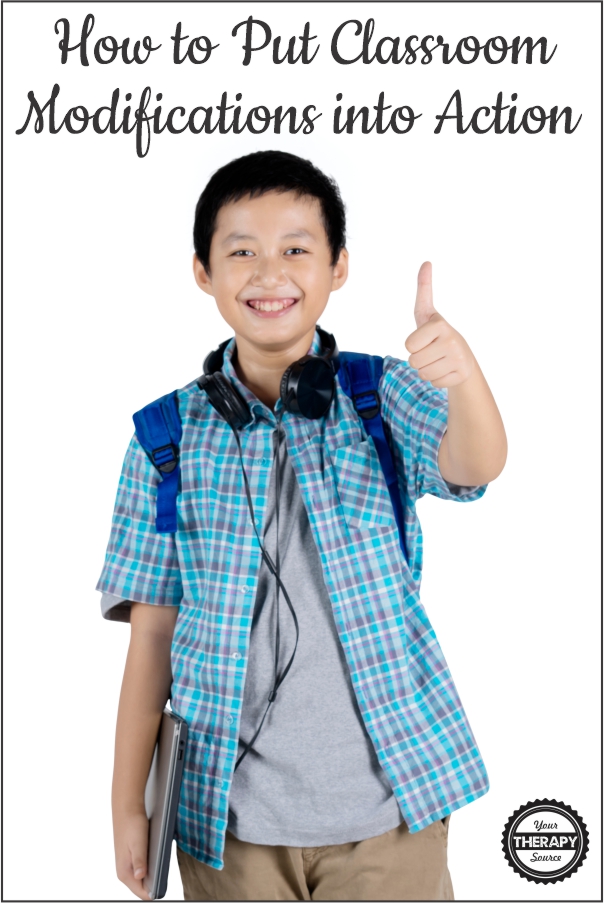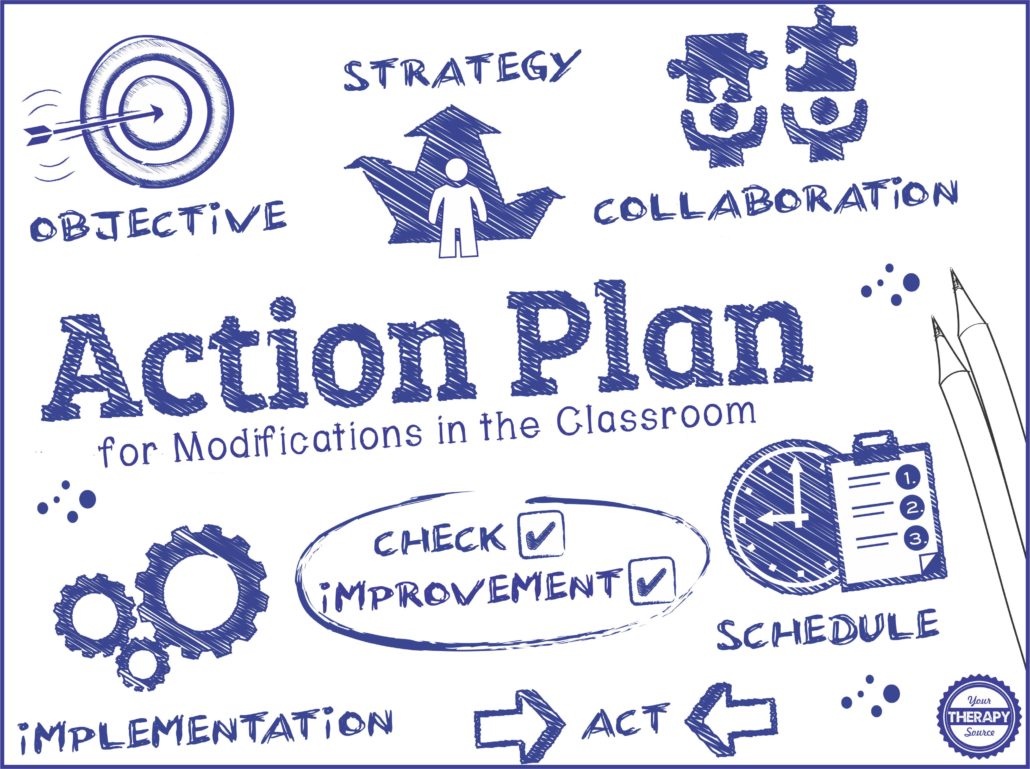How to Put Classroom Modifications into Action
Action Plan for Classroom Modifications
When students require modifications in the classroom it can be beneficial to put an action plan into place to ensure that the classroom modifications are actually helping the student.
Sometimes teachers, related service providers, or school psychologists recommend modifications to occur in the classroom on a day to day basis. It is important to make sure that the modifications are doable and helpful.
7 Steps to Implement Classroom Modifications
Here are some steps to take to move into action with a teamwork approach.
- Collaborate and strategize with the team to determine the modification or accommodation that the student requires.
- Determine the objectives/purpose of the modification. Set goals.
- Schedule when the modifications will occur.
- Establish who will help (teacher, therapist, parents, peer, student) implement the modification.
- Decide where the modifications will be implemented (in class, outside of class, at home, etc).
- Student ACTS and uses the modification.
- Check improvement and MONITOR PROGRESS! This is such an important part of establishing the benefit of modifications or accommodations for students. Sometimes year after year, modifications continue to roll over on students IEPs into the next school year without have data to back up why or how the modification is beneficial for the student. Remember to revisit the goals that were set when creating the action plan and collect data on whether the modifications are advantageous for the student. If not, start over again back at step one.
How Can You Help Determine What Classroom Modifications to Use?
If you have students who need accommodations such as movement breaks, graphic organizers, technology, preferential seating and more, then the Self-Advocacy for Students workbook can be your guide to help students advocate for their needs and help them to develop self-determination skills.

The goal of this 10 step Self-Advocacy for Students workbook is to help students learn to:
- have a proactive role in IEP development.
- be aware of their own strengths and needs.
- communicate their choices and decisions.
- self-evaluate to make new decisions.
- know when and where to use accommodations.
- develop self-advocacy skills to live a more independent life at school, home and the workplace.
Modifications and Interventions for School – Reporting Forms provides pediatric therapists with over sixty, reproducible reporting forms with hundreds of suggested modifications and interventions for students. Interventions are listed by skill areas such as handwriting, scissors, dressing, walking, stairs, wheelchair skills and sensory skills. This book is a great tool for all school based therapists and teachers to determine what modifications and interventions are successful for a particular student. Find out more information.





